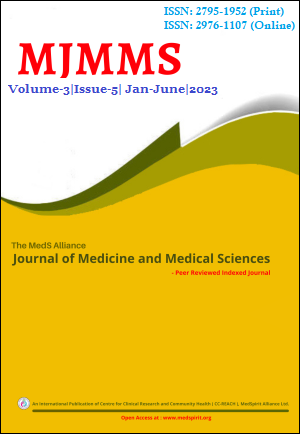An Evaluation of Antifungal effectiveness of Henna and Turmeric against Candida albicans adhered to Acrylic resin: An invitro analysis for Prevention of Denture stomatitis
DOI:
https://doi.org/10.3126/mjmms.v3i5.60070Keywords:
Candida albicans, henna, PMMA-based heat polymerizing denture base resin, turmericAbstract
INTRODUCTION: Candida albicans has been known as the most common etiologic agent to cause denture stomatitis. Due to increasing resistance of this organism towards antifungal agents, plants with medicinal value are being used as alternatives. Thus this study was done to evaluate the antifungal efficacy of medicinal plants such as henna and turmeric against Candida albicans attached to acrylic denture resin by incorporating them into the resin.
MATERIALS AND METHODS: 252 acrylic strips were prepared of Polymethyl methacrylate-based heat polymerizing denture base resin by compression molding technique and divided into 7 groups consisting of 36 samples each. The first group was prepared with only polymer and monomer and used as control. The remaining groups were divided according to the concentrations of henna and turmeric used. The concentrations of henna used were 0.5% (H1), 4% (H2) and 10% (H3) and of turmeric were 0.1% (T1), 3% (T2) and 7% (T3). The acrylic samples were exposed to Candida albicans by adhesion-based microbiological method. The amount of Candida adhered to acrylic samples was evaluated by two methods: slide count and plate count method.
RESULTS: In both the methods used, H3, T2 and T3 showed significant antifungal effect. However when their antifungal effect was compared within the subgroups, no significant difference was found.
CONCLUSIONS: Adding 10% henna, 3% and 7% turmeric can inhibit the growth of Candida albicans on the acrylic resin surface.
Downloads
Downloads
Published
How to Cite
Issue
Section
License

This work is licensed under a Creative Commons Attribution-NonCommercial 4.0 International License.




